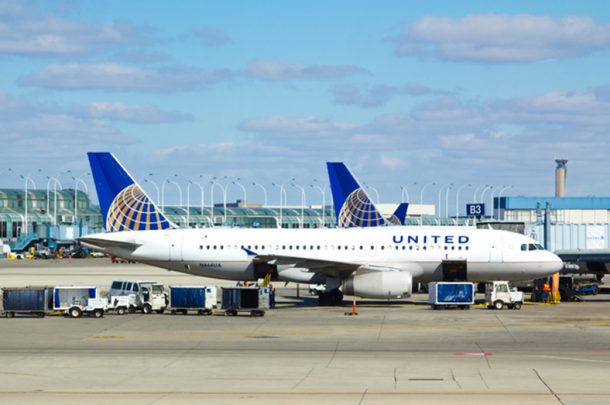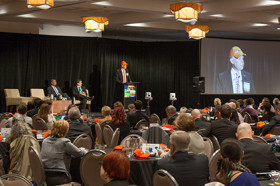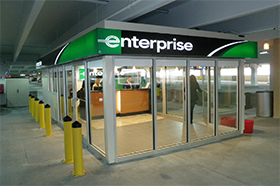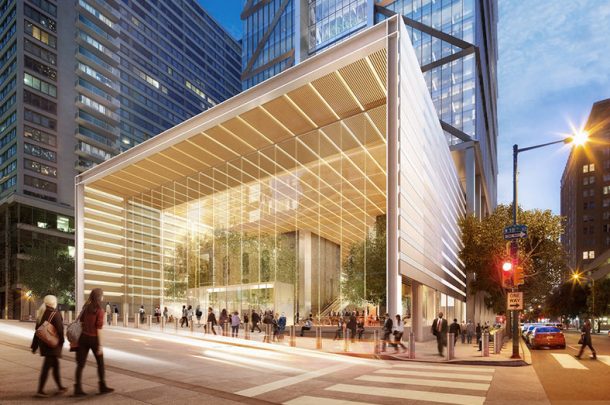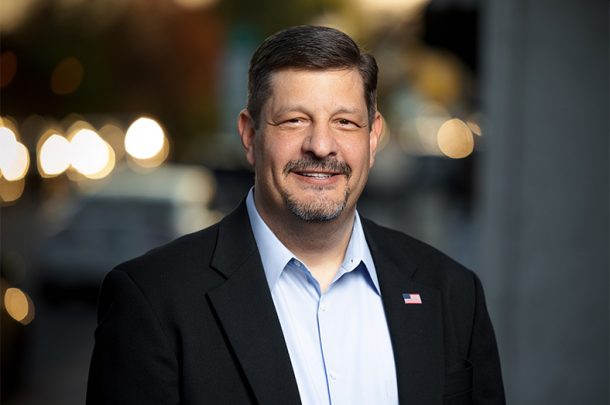
The latest trend in airport facility planning is the consolidation of rental car company facilities into single site, multi-tenant buildings. The previous model had car rental companies located at various locations, typically on airport property, each with their own independent shuttle service, customer service and maintenance facilities. After reassessing the situation and attempting to be more environmentally-friendly, the Chicago Department of Aviation (CDA) has moved to consolidating their rental car tenants into singular convenient locations at both O’Hare and Midway International Airports. The consolidated rental car facility (CRCF) at Midway opened in 2013 and the facility at O’Hare is currently being designed.
In the case of the CRCF at Midway, the CDA pursued and achieved LEED Silver certification which is unique for a facility of this kind (Primera assisted the CDA in completing the LEED certification forms). The 853,200 square-foot CRCF includes a customer service center, a five-level garage that can accommodate 1,870 vehicles, and a quick turn-around (QTA) facility where vehicles are fueled, washed and prepared for rental. Sustainable elements, such as shuttle buses that are powered by biodiesel fuel, provide efficient and convenient transportation to and from the facility. Primera provided the architectural, mechanical, electrical, and plumbing design for the build-out of one of the car rental tenants in this facility and helped incorporate other environmentally-friendly features that include:
- 14,076 square feet of a vegetated green roof covering 100% of the QTA building
- Grid-tied photovoltaic panels and nine horizontal axis wind turbines generating up to 37.5 kW of electricity, or 6% of the facility’s energy needs
- One million gallon cistern and rainwater collection system for landscaping and vehicle washing
- Low-flow fixtures reducing potable water use by over 30%
- 27% reduction in anticipated overall energy usage compared to ASHRAE standards
- 100% interior and exterior LED lighting
- Building automation system for ongoing energy management and reporting
- Installation of a five-story exterior green wall
- Native, drought tolerant, non-wildlife attracting landscaping
- Preferential parking for alternatively fueled vehicles
- High-albedo (reflectance) white concrete to reduce the heat island effect and conserve energy
- Solar panels and green walls
The joint-use facility being designed for O’Hare is also pursuing LEED certification and will include many of the sustainable features as the Midway facility. One of the significant features of the O’Hare facility is that it will be a multi-modal transportation facility. The Airport Transit System (ATS), the airport’s light rail transport that connects passenger terminals to long-term parking locations, will be extended so that it terminates at the new facility. Passengers will not only be able to access the car rental facility via the ATS, which will further decrease terminal traffic, but the proposed location is also serviced by multiple CTA bus routes and a Metra station. Several hotels and restaurants are located nearby, with future plans for additional commercial and retail developments, making the facility a short lay-over traveler’s hub.
The consolidation of car rental tenants into a joint-use facility turns out to be a win-win-win for all, including the customers, the car rental tenant, and the airport owner. Consolidating tenants into a single facility offers the customers a better experience since all car rental options are located in one location, making it easier to comparison shop. Having a single shuttle service servicing the terminals reduces traffic and leads to shortened wait times for car renters and passengers. The benefits to the car rental companies includes the ability to share in the cost of operating the shuttle service, in addition to sharing in the cost of other ancillary facilities (i.e. parking, common areas, and maintenance facilities). Finally, the airport owner benefits from not only the improved traffic flow at the terminal area but also the availability of additional real estate for development. For example, the new CRCF facility at Midway freed up valuable space in their main parking garage and terminal.
The CDA is setting a good example by being more sustainable. The hope is that this trend continues on an upward path and that other cities and markets take suit. For additional information on the use of sustainable elements in the aviation industry please contact John Antonoglu.





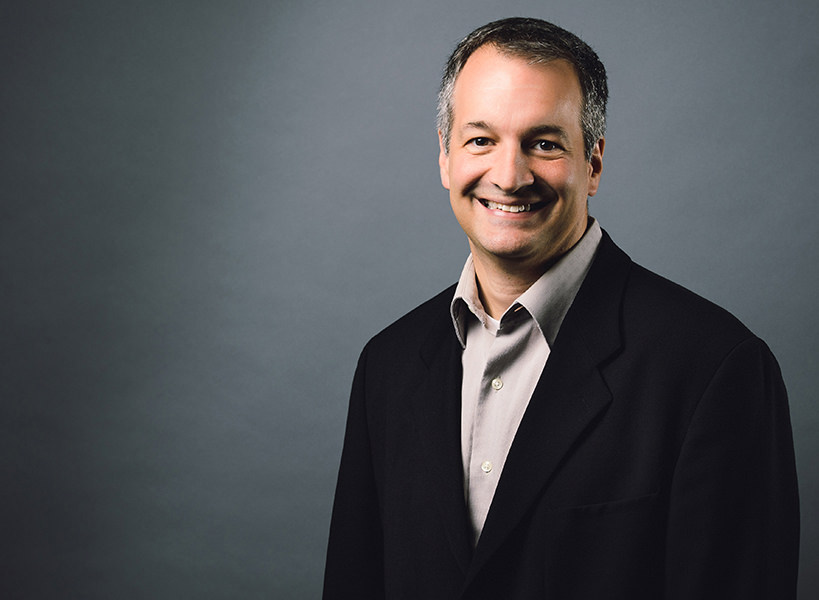

 LEED v4 is Here. What Now?
LEED v4 is Here. What Now? 
